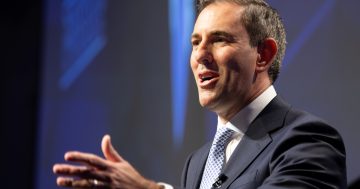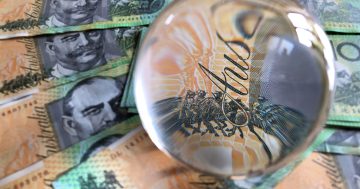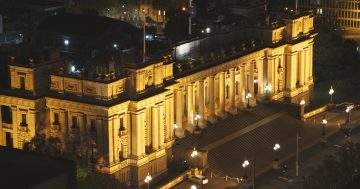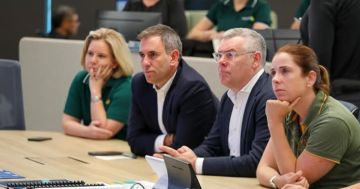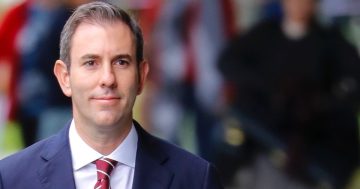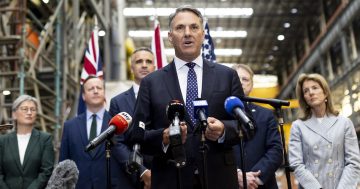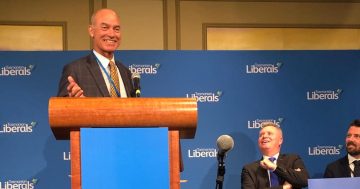This is a federal budget designed for ‘difficult decisions in difficult times’, Laura Tingle* says it needs to be.
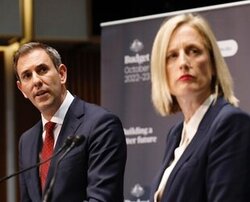 Labor treasurers have always come into office feeling they have to do a lot more to prove their fiscal credentials than the Coalition.
Labor treasurers have always come into office feeling they have to do a lot more to prove their fiscal credentials than the Coalition.
It’s just the reality of dealing with entrenched perceptions in the electorate that Labor is not as good at dealing with money as the conservatives, irrespective of the fact that, since the Hawke era, it has been Labor governments that have made the biggest discretionary cuts in spending.
Jim Chalmers’s first budget is an exercise in thoroughly cleaning out the Augean stables left after a decade of little actual spending restraint, a lot of political largesse, and quite a lot of general mess left after the chaotic demands of a pandemic.
The budget is the work of a new government establishing its credentials as a serious budget manager by banking unexpected tax windfalls from high commodity prices.
But it is doing this not just to boost the budget bottom line next financial year and for the three years beyond but in clear recognition that it will need impeccable budget credentials to lead a debate about profoundly remaking the spending and tax sides of the budget during this term and – if it manages the politics well – in subsequent terms.
As the treasurer said on Tuesday afternoon, the work of leading a discussion on government spending – and tax reform — can’t wait for another three or four years.
His first budget, he said, was designed to demonstrate the government was prepared to take “difficult decisions in difficult times”.
If it wants to take some of those decisions before gaining an explicit mandate to do so at another election, it needs all the credibility it can get.
A car crash is coming
The budget confirms there is an inevitable car crash coming between the burgeoning costs of services provided to our children, old people and disabled, and a tax base that is not equipped to equitably fund those costs.
Labor’s fiscal strategy dumps the arbitrary tax cap imposed by the Coalition of tax rising to no more than 23.9 per cent of GDP – not that it was going to breach that cap in the immediate term.
In fact, tax receipts as a proportion of GDP are actually going to fall to just 22.7 per cent of GDP in 2022-23.
But the budget’s fiscal strategy is now based on “allowing tax receipts and income support to respond in line with changes in the economy and directing the majority of improvements in tax receipts to budget repair”.
That is, the government may have dumped the tax cap – and is prepared to see the tax take rise pending a national discussion on serious budgetary reform – but is justifying this on the basis that those tax revenues will be dedicated to reducing deficits and debt.
And that’s what the government has demonstrated in this budget.
The strategy will devote more than 90 per cent of a forecast $124 billion improvement in tax collections over four years to reducing the budget deficit.
The government argues the Coalition returned only around 40 per cent of tax windfalls to the budget bottom line over its almost 10 years in office, opting to instead spend the majority.
Labor says it will limit growth in spending “until gross debt as a share of GDP is on a downwards trajectory”.
It will have to impose that limit against some powerful forces at work including a ballooning public debt interest bill and the continuing explosion of spending on the NDIS.
Promises, savings and legacy issues
This budget funds $1.4 billion in election commitments.
But it also had to find savings – and delay or reallocate some spending — to cover $4.2 billion of “unavoidable spending” (on things like the ongoing costs of the COVID-19 pandemic and disaster recovery) and resolving $4.1 billion of “legacy issues”: programs which had not been properly funded by the former government.
A bit like the fiscal strategy, the politics of this budget is restrained.
There is the odd reference to “black holes” but the Chalmers budget foregoes the opportunity so loved by treasurers after a change of government to simply frame the budget primarily as a political attack on the record of their predecessors.
The many pressures now crowding in on the budget — like soaring energy prices and natural disasters seemingly becoming part of everyday life – make for a different sort of debate.
Climate change edges in
The costs of climate change push their way into every aspect of the budget.
The budget papers contain a long section which examines the impacts of climate change and its budgetary costs – everything from the cost of transforming our energy sector, to the impact that climate will have on the mix of industries in the economy (and therefore government spending and tax).
This budget has included the beginnings of new modelling to make climate-related spending transparent.
This isn’t about itemising spending undertaken to address climate change per se, but instead seeks to document the increasing cost that climate change is already imposing on the budget — as well as the broader economy.
For example, it covers the costs associated with responding to extreme weather events which stretch well beyond disaster payment support to their impacts on economic activity, on infrastructure and on health, social and community impacts.
(Consider things like the costs to the health system of responding to more extreme heat days.)
The budget papers illustrate the point by noting an estimate that the south-east Queensland floods between February and April cost $7.7 billion.
These, of course, are not necessarily the issues that will grab the immediate headlines.
There is the commitment to a Housing Accord with the private sector and state governments to build around 250,000 houses a year from 2024 — when the government is hoping that current capacity constraints can let that happen, and happen in a non-inflationary way.
The budget paints a grim picture of the economy in the 12 months ahead as it will be experienced by most households, with less certainty about job prospects, big increases in energy costs, and inflation eating into incomes.
Household consumption will be the major contributor to keeping the economy ticking over.
But it will do so without the benefit of the government pandemic spending that helped keep us afloat in the past few years, and a reduced contribution from net exports.
*Laura Tingle is the chief political correspondent for nightly current affairs program 7.30.
This article first appeared at abc.net.au.


